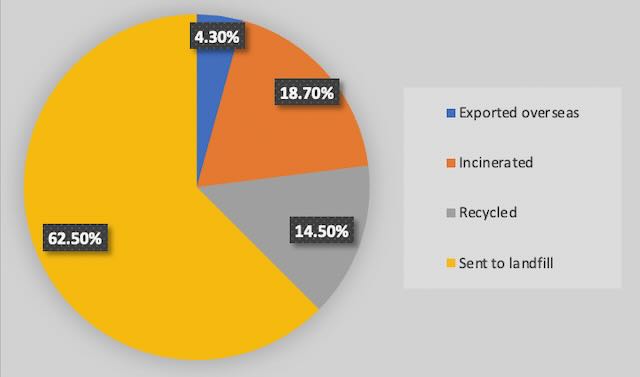Unseen Costs of Looking Nice
Posted on February 1, 2023, by Kim Klein CoL

I start with a confession: I am the opposite of a clothes horse. I once thought of joining the military just so I would not have to think about what to wear. I hate shopping. But my work required me to look professional and, from time to time, I went to an event that called for being dressed up, so I had to have some nice clothes. Every few years I went on a major spending spree going to stores that were known to have really good service. I camped out in the fitting room and sent the clerks off to find outfits for me. The upside for them is that I was easy to please. “You look nice in that” causes me to say, “I’ll take it, and does it come in any other colors?”
Now I am retired, and I recently went through a major clothes purge. “I never have to wear you again!” I said joyfully to several outfits. This effort made me wonder what actually happens to the clothes we give away? The answer was depressing.
According to the EPA, Americans generate 16 million tons of textile waste a year equaling just over 6% of total municipal waste (for context, plastics make up 13% of our waste stream). To be sure, this includes other textiles such as carpets, sheets and towels, but a large portion is clothing. We also send 700,000 tons of used clothing overseas and 2.5 million tons of clothing are recycled. Three million tons are incinerated, and 10 million tons get sent to landfills.

Most of the people reading this probably do what I do and donate used clothes to a thrift shop. I can then imagine my clothes having a whole new life, perhaps worn by someone who likes clothes and will appreciate them. Donating clothes for reuse is an excellent way to combat the waste discussed above. Goodwill, for example, sells used clothes through its 3,200 stores. When clothes don’t sell, Goodwill sends them to their outlets where they are sold for 99 cents a pound. That which cannot be sold this way is sent to be recycled. About 5% of Goodwill clothes wind up in a landfill, usually due to dampness causing mildew which can contaminate entire bales of clothing.
So what is to be done? Here are three suggestions from Green America:
- Reduce clothing purchases and consider the larger waste trail behind the textiles we buy. Donating clothing is far better than landfilling, but it does not erase the impacts of the clothes we buy and discard.
- When buying clothes, choose secondhand. You can find used clothing for sale in local thrift stores or online.
- For new items, look for “recycled content” products to ensure we are creating demand for recycled textiles, which leads to more incentive for companies to close the loop and give new life to used textiles.
Fortunately, for most of us, these three actions will be easy and many of us are already doing at least two of them. But every action helps and sharing these ideas with others can have wide-ranging ripple effects. I add another idea and invite people to join me in it. Let’s create “Frumps for Climate Justice.” I know I will be well dressed for any event we plan!
